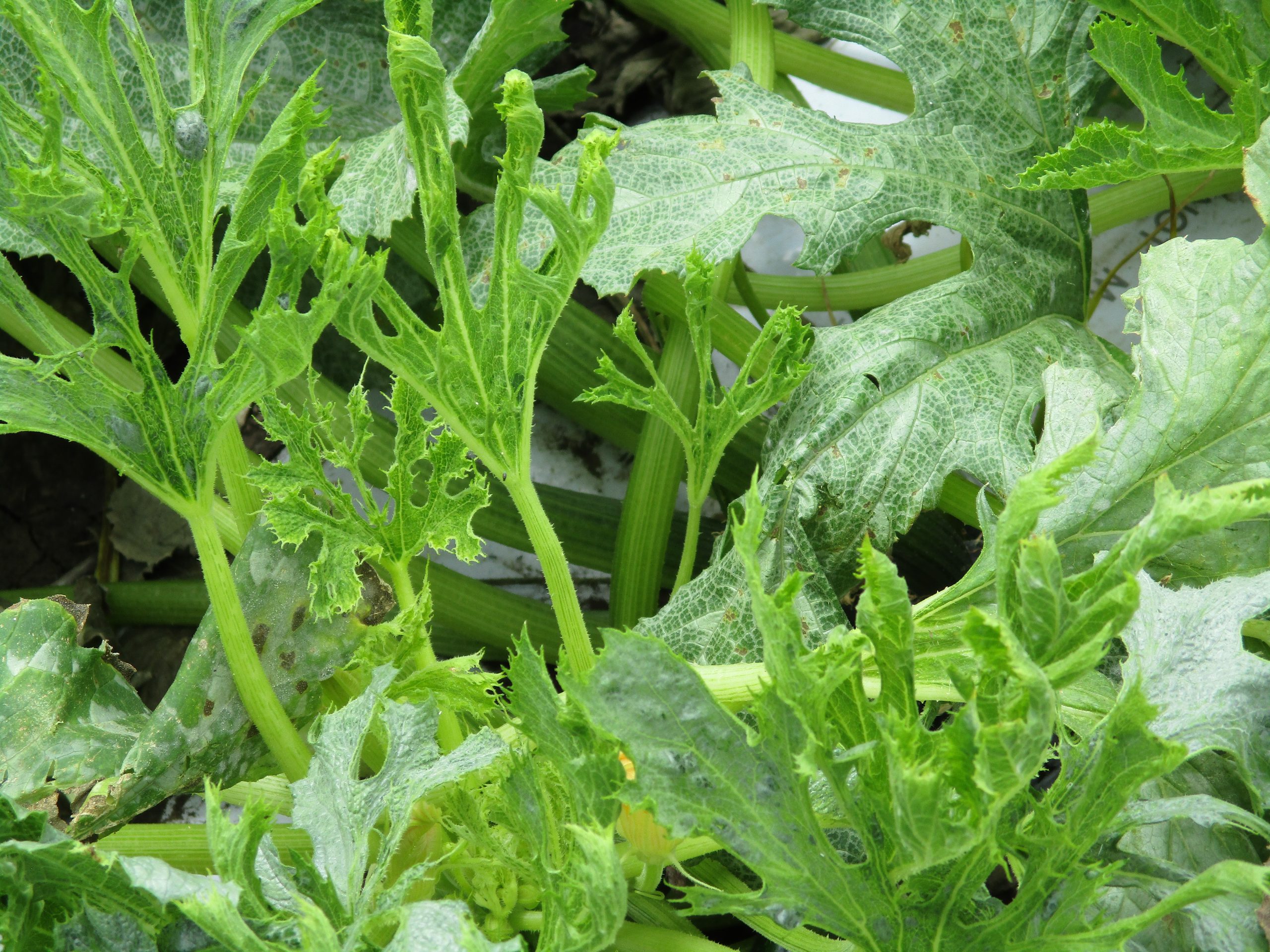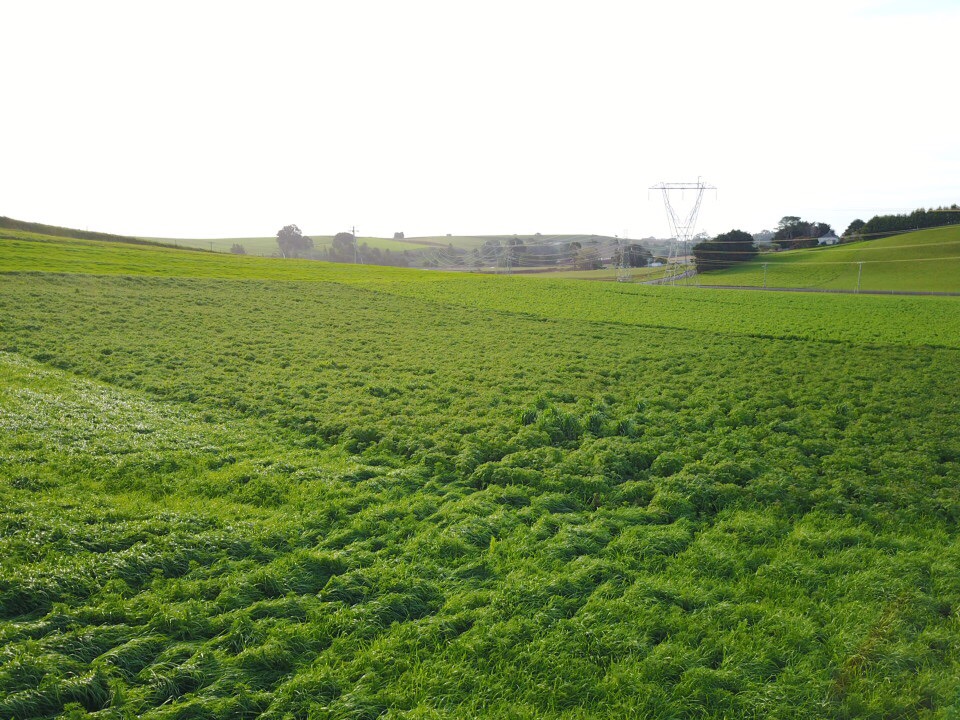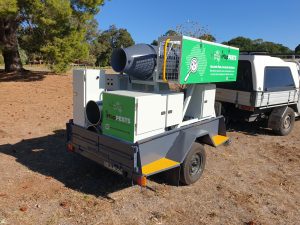
Investigation into viruses affecting veg continues
3 June 2020
Mixed species cover crops stand out in Tassie trial
3 June 2020The ability to accurately monitor the timing, abundance and movement of airborne agricultural pests and pathogens is limited and fragmented across the Australian landscape. The iMapPESTS Program aims to address the problem through the provision of enhanced and coordinated surveillance, diagnostics and reporting tools to its industry stakeholders. Shakira Johnson reports.
While the country has been practising social distancing and adhering to restrictions of lockdown, airborne plant pests and pathogens don’t stop affecting our plant industries. It is more important than ever that we look to innovative solutions to address the current lack of a coordinated, rapid and localised alert system to reduce the threat of pest and pathogen infestation.
Rohan Kimber is a research scientist at the South Australian Research and Development Institute (SARDI), and he uses Western flower thrips as an example of a destructive pest.
“Western flower thrips spread across the Australian landscape. They can survive and build up in cereals that have low susceptibility, and then fly to vegetable crops where they transmit viruses, such as tomato spotted wilt virus,” Dr Kimber said.
To assist in identifying pests and coordinating surveillance, sentinels are a suite of custom built, flexible mobile surveillance units that are central to the development of the plant surveillance network as a part of the multi-million-dollar, cross-industry iMapPESTS program.
While the sentinels trap airborne pests and pathogens, downstream researchers are investigating new and emerging diagnostic tools and techniques that aim to deliver rapid and accurate information on what exactly is captured. The results generated by the surveillance and diagnostics is then distributed to growers as easy to access, data visualisations and outputs.
The localised reporting of pests and pathogens aims to provide farmers across industry sectors with improved ability to make decisions relating to pest management on-farm.
Three trials completed for prototype sentinel unit
The prototype surveillance unit, Sentinel 1, held its first two trials in growing regions north of Adelaide, followed by a road trip to northern Queensland where it was launched at a sugar research site near Cairns. The first trial at the Hart field site for four weeks in spring 2019 was followed by a 12-week trial in the Barossa Valley over summer.
During this time, the sentinel targeted pests and diseases present in the grains and wine growing regions. Results from the four-week field trial in spring 2019 showed clear differences in the patterns of pest development that would be missed from a single sampling activity. The data captured at Hart is now available to stakeholders via the iMapPESTS website.
A high-priority pest list for each major agricultural sector has been developed, with a focus on targets that affect multiple industries (e.g. green peach aphid and grey mould caused by Botrytis). After the sentinel captures airborne pests and diseases – including many long-distance dispersal insects such as aphids and thrips – the samples are dispatched to SARDI for inspection.
Testing samples
Laboratory analyses of the sentinel samples quantifies the pests and pathogens present. Molecular testing can deal with large numbers of samples rapidly and accurately. Yet, molecular tests for many of the pests and pathogens do not yet exist. iMapPESTS includes the development of more diagnostic tests using next-generation sequencing by Agriculture Victoria (AgVic), Sugar Research Australia and University of Queensland.
The first three trials have highlighted the importance of a combination of traditional methods of identification (morphological identification) and the more rapid, high-throughput processes. These are provided by SARDI’s Molecular Diagnostics Centre and AgVic.
“It is important that we use both traditional and modern methods. Molecular tests will only identify species for which they have been developed. Morphological identification can identify any pest but is very time consuming, particularly in mixed population samples like those collected by the sentinel,” Dr Kimber explained.
An example of why this is important occurred in the very first field trial. The molecular tests for western flower thrips were run and numbers were found to be low, despite large numbers of thrips having been collected. The morphological identification revealed the dominant thrips were a different target, the similar but far less damaging plague thrips (Thrips imagines).
The pests collected by the two-metre and six-metre suction traps on the sentinel were also compared to gain insight into what might be hanging around in the paddock at two metres, versus what is captured on a regional scale at six metres into the air column. This tall trap generally captures smaller insects caught up in higher wind currents and larger migratory insect. The lower numbers in the two-metre trap indicated good pest control.
Visualising patterns of individual pest and pathogen occurrences, together with weather data, will help researchers and decision makers build an understanding of pest and population dynamics.
Field trials: Barossa Valley and Cairns
A second field trial in the Barossa Valley occurred over summer before being deployed for a field trial at Sugar Research Australia’s Meringa research site in Cairns. The sentinel trial in northern Queensland aimed to optimise trapping and sampling in a tropical environment characterised by more adverse conditions such as those experienced during the wet season in the tropics.
Unfortunately, the tropical trial for the sentinel was cut short and sent back to headquarters in Adelaide due to COVID-19 travel restrictions. However, the four-week trial has provided some learning opportunities which have led to engineering and operational optimisations and improvements.
Mobile surveillance unit family grows
Two more sentinels have recently been added to the mobile surveillance network, Sentinels 2 and 3.
The suite of three sentinels are currently being deployed in growing regions around Adelaide, including Adelaide Hills, McLaren Vale and the intensive cropping region of Virginia.
The suite of sentinels is set to expand over the remainder of the year. They will range in size, deployment method (trailer, skid, modular unit) and composition of traps and other features. These features are being explored to cater to different environments and industry requirements, and will be deployed at strategic locations around the country in 2021 for trialling.
“These trials are not only providing us with valuable insights into pest and pathogen populations and dynamics, but are helping us identify the most effective and efficient insect and spore samplers for target capture,” Dr Kimber said.
By the end of the project in 2022, the team hope to have a demonstrated a proof-of-concept surveillance system that is suitable to different regions and supported by the appropriate rapid diagnostic tests for key insect pests and pathogens across industry sectors.
The iMapPESTS team will work with growers and industry representatives to understand the best way to communicate and visualise the dynamic pest and pathogen information for end-users. Growers and anyone involved in plant pest management are encouraged to visit the iMapPESTS website for more information or to get in touch.

Sentinel 3 is a lighter, cheaper piece of equipment that will move from manual to automated sampling during its early trial phase.
Acknowledgements
The iMapPESTS: Sentinel Surveillance for Agriculture is a five-year, $21 million-dollar research, development and extension (RD&E) investment. It is supported by Hort Innovation, through funding from the Australian Government as part of its Rural R&D for Profit program as well as investment from plant industry Research and Development Corporations (RDCs). In addition, in-kind contributions from national and international partner organisations have been received, including SARDI, Agriculture Victoria and Rothamsted Research (UK), to name a few.
Find out more
Please contact Engagement and Adoption Coordinator for iMapPESTS Shakira Johnson on 0433 937 564 or shakira.johnson@ausveg.com.au.
Further details can be found at the iMapPESTS website. You can follow the project on Twitter: @iMapPESTS.
Project Number: ST16010
This article first appeared in the winter 2020 edition of Vegetables Australia. Click here to read the full publication.

